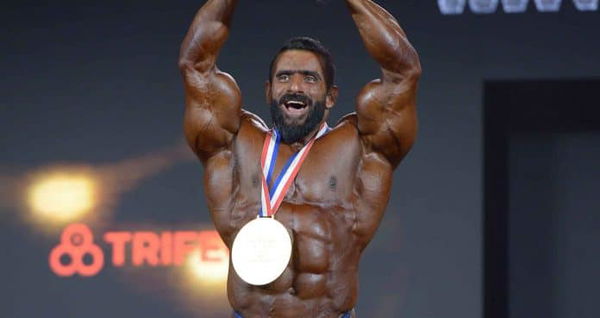

Bodybuilding evolved into a mainstream sport in the recent past thanks to the popularity of the Mr. Olympia championship. Since its inception in 1965, the Super Bowl of bodybuilding is the most sought-after event in the arena as the best bodybuilder in the world will be crowned as Mr. Olympia. However, unlike ball sports and combat sports, bodybuilding is dependent on physique rather than on goals made or strength displayed.
Watch What’s Trending Now!
Bodybuilders have to train over the years to build a Mr. Olympia-winning physique, and sometimes genetics also determine the destiny of a bodybuilder. While the idea of the best physique for every member on the judging panel varies, most search for symmetry, conditioning, and muscle mass in the competing bodybuilders. So, the IFBB that organizes the Mr. Olympia event every year has a judging system in place that helps in declaring the winner without bias. Here are the various aspects that bodybuilders are judged for during the Pre-judging and Final rounds of the Mr. Olympia for the eleven categories.
ADVERTISEMENT
Article continues below this ad
The parameters to win the Mr. Olympia
Bodybuilding took life as a sport over a century ago and has evolved over the years as a mainstream sport. The 1970s was dominated by aesthetically pleasing bodybuilders like Arnold Schwarzenegger and Frank Zane. Since the 1990s, the Mass Monster era in bodybuilding kickstarted with icons like Dorian Yates, Ronnie Coleman, Jay Cutler, and Phil Heath winning trophies for bringing heavy mass complimented by aesthetics to the Mr. Olympia stage. So, the Men’s Open now has mass monsters competing for the title.
The remaining ten categories at Mr. Olympia may vary in weight class and posing routine, but the basic judging parameters remain intact. These include Muscle mass, Symmetry and Balance, and Conditioning or Definition. Judges rate bodybuilders in different categories, considering each aspect, while bodybuilders flex their bodies in a prescribed posing routine on the stage for Pre-judging and Finals.
ADVERTISEMENT
Article continues below this ad
Muscle Mass
Bodybuilding is all about building a ripped physique by training all the muscle groups in the body. The bulkier the muscle develops, the more one can improve chances of winning the Sandow trophy. As Ronnie Coleman points out, muscle maturity also plays a crucial role. Judges would be scrutinizing for large and fuller muscles that have great striation and vasculature.

ADVERTISEMENT
Article continues below this ad
The visibility of muscle separation when flexed portrays the amount of weightlifting done by a bodybuilder. Developed muscles add to the conditioning of the bodybuilder’s physique. However, while in a quest to build a big physique, bodybuilders shouldn’t lose out on symmetry.
Symmetry and Balance
Symmetry has been crucial in the history of the Mr. Olympia. Frank Zane, the pioneer of bodybuilding symmetry, earned three Mr. Olympia titles because of aesthetics. While adding muscle mass is essential, bodybuilders can’t compromise on symmetry, to win the Mr. Olympia title. An aesthetically pleasing body will be bring points in symmetry and conditioning.

If the bodybuilders develop the upper body and don’t focus on the lower body, it could affect the symmetry. Every muscle should be large but to the right proportions, giving a perfect balance to the entire physique. The chest should be evenly built up, and the biceps and triceps should complement the entire physique. The big quads will look good only with fully developed calves. Missing out on any muscle group or overdoing one can affect the symmetry, affecting the overall score in the event. So, the whole body should be proportionate to ace the symmetrical aspect. Finally, conditioning is the key to success for bodybuilders.
Muscle definition or conditioning
The human body is built up of muscles covered by the fat storing adipose tissue. But for proper muscle visibility, bodybuilders ace body fat percentage below five percent. The low body fat will help them to build and flex a Greek god-like physique with utmost conditioning or definition. Further, during the days approaching the events, bodybuilders also focus on water intake to prevent looking fuller or watery while posing on the stage. So, less fat and water in the body leaves the muscle texture and curves to be clearly visible for the judges to rate.

Hadi Choopan lifted last year’s Mr. Olympia because of his great conditioning, as per 8x Mr. Olympia Ronnie Coleman. So, competing bodybuilders can’t compromise on definition to lift the Sandow trophy. The bodybuilder with the best conditioning, perfect symmetry, and great muscle mass will ultimately win the 2023 Mr. Olympia championship. But what are the rounds for events bodybuilders compete in?
Pre-judging
The eleven categories competing at Joe Weider’s weekend will compete in two rounds: Pre-judging and Finals. In the Pre-judging, each bodybuilder has to perform the mandatory posing routine for 60 seconds at the center of the stage. After the individual performance, judges will ask competitors to hit mandatory poses in small groups to compare the best physiques on stage.
The IFBB states, “*Judges will score competitors according to the “total package”, which is a balance of size, symmetry and muscularity.”
Finals
The bodybuilders, especially the top finalists, perform the posing routine for 60 seconds for their music of choice. The top finalist then takes part in the pose down for 60 seconds before the winner is declared.
The 2023 Mr. Olympia is hours away. Despite the sad news of Nick Walker quitting the show at the last-minute owing to an injury, the anticipation is still intact, given mass creatures like Hadi Choopan, Samson Dauda, and Derek Lunsford will showcase the efforts of a year on the Mr. Olympia stage soon. Are you excited to witness this year’s champion? Let us know in the comments below.
Watch this story | From Lou Ferrigno to Jay Cutler: Here Are the Retired Bodybuilders Who Are Still Ripped
ADVERTISEMENT
ADVERTISEMENT
ADVERTISEMENT
ADVERTISEMENT

